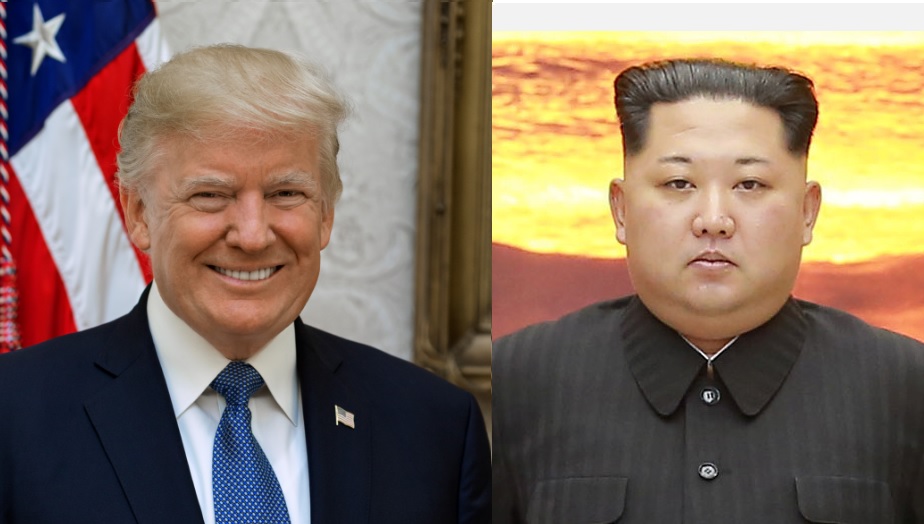
The second summit between President Donald Trump and Chairman Kim Jong Un is soon approaching, taking place this week on February 27 and 28 in Hanoi, Vietnam. Both Trump and Kim have expressed their willingness to meet, while both South Korea’s Moon Jae-in and China’s Xi Jinping see the possibility of the meeting as a positive development for maintaining progress made last year when North Korea began working with the international community.
Unlike the first summit, which was seen as an accomplishment in itself, the second summit will require the two actors to sit at the negotiation table with clear ideas about the scope of the discussion. The issues at stake are known. The first issue is denuclearization, which for the U.S. means North Korea giving up its nuclear capabilities unilaterally, while for Pyongyang it means the complete denuclearization of the Korean Peninsula. The second issue is the end of the Korean War which, as a result, should end the hostile relationships between the parties involved. The last issue on the agenda is expected to be sanctions relief for North Korea. For progress to be made on these issues, however, it is critical that both parties’ mid-level working groups prepare accordingly. The February 5th talks in Pyongyang between the U.S. Special Representative for North Korea, Stephen Biegun, and his counterpart, Kim Hyok Chol, set the stage for such preparations.
Overall, the aim of the second U.S.-North Korea summit is to find a way to start implementing the agreements made inthe DPRK-U.S. Joint Statement, which Trump and Kim signed on June 12th, 2018. The Joint Statement commits the two parties to “establish new U.S.–DPRK relations” and to “build a lasting and stable peace regime on the Korean Peninsula.” Once these two goals are achieved, the DPRK will “commit to working towards complete denuclearization of the Korean Peninsula,” including the removal of U.S. nuclear weapons in the region. The logic behind this statement is straightforward and recognises that denuclearization will not happen overnight, given the value that North Korea attaches to its nuclear and missile programs. The treaty ultimately aims to mollify the Kim regime’s perceived security threats by ending the hostile relationship between Washington and Pyongyang and working towards a formal establishment of peace for the Peninsula and the region.
For two actors that have barely spoken to each other in decades and that are extremely suspicious of one another, building mutual trust is the key starting point. With this in mind, the statement regarding denuclearization seems to be in line with Kim Jong Un’s definition of denuclearization, which requires that the U.S. and South Korea take “progressive and synchronous measures” according to denuclearization efforts made by North Korea. Hopefully, the two delegations can inch forward on diplomatic endeavours, such as establishing a U.S. liaison office in Pyongyang, implementing a partial lift on economic sanctions thereby allowing South Korea to establish economic relations with the North, and eventually putting an official end of the Korean War. For each and every step of the diplomatic process that they achieve, they strengthen the opportunity for a renewed relationship and a safer international community.
In order for this process to be fruitful, the actors involved should have realistic expectations and be committed to embark on a new path of diplomacy. For example, the U.S. should abandon hopes that sanctions will successfully pressure Pyongyang to give up its nuclear and missile armaments. On the DPRK side, Kim Jong Un showed his commitment throughout 2018, from the country’s diplomatic overture into the outside world and the development of inter-Korean relations, to the declaration of a new strategic line based on economic development and halting nuclear and missile tests. The North Korean leader aims to make North Korea a normal country, but without economic development and progress, which would be assured by sanctions relief and a formal end to the Korean war, that cannot happen. At the end of the day, he knows that he has to offer something substantial to the U.S. in this next summit, and he has probably communicated what he has in mind to Xi Jinping during their fourth summit earlier this month in Beijing. That offer could include a formal moratorium on the nuclear and missile testing or the dismantlement of Yongbyon nuclear facilities.
Kim is expected to hold up his part of the deal if Trump offers “complementary measures,” which could include a declaration of peace that shows a willingness to start working on a formal treaty to end the Korean War, a partial relief of sanctions to allow South Korea to restart operations at the Kaesong industrial complex, or a formal commitment to halt military exercises with Seoul. If Trump puts this kind of offer on the table during his second summit with Kim Jong Un – before denuclearization is achieved – it will be a sign that the U.S. administration has finally realised that the complete, irreversible, and verifiable denuclearisation (CIVD) of North Korea is not a realistic goal in the short term. Continuing to ask Pyongyang to do that before giving the Kim regime any security assurance is even more counterproductive. However, Pompeo has said that the security of the American people is the goal in dealing with North Korea. This leaves little space for imagination, and leaves CIVD at the top of the Trump agenda for the summit. Kim Jong Un will not give up and he will “find a new way for defending the sovereignty of the country and the supreme interests of the state,” as he affirmed on the first of January. China will be the first actor involved in the DPRK’s plan B. But if the U.S. shows flexibility on offering complementary measures to Kim Jong Un, 2019 could be positive for the Northeast Asian region and, most importantly, for the North Korean people.
